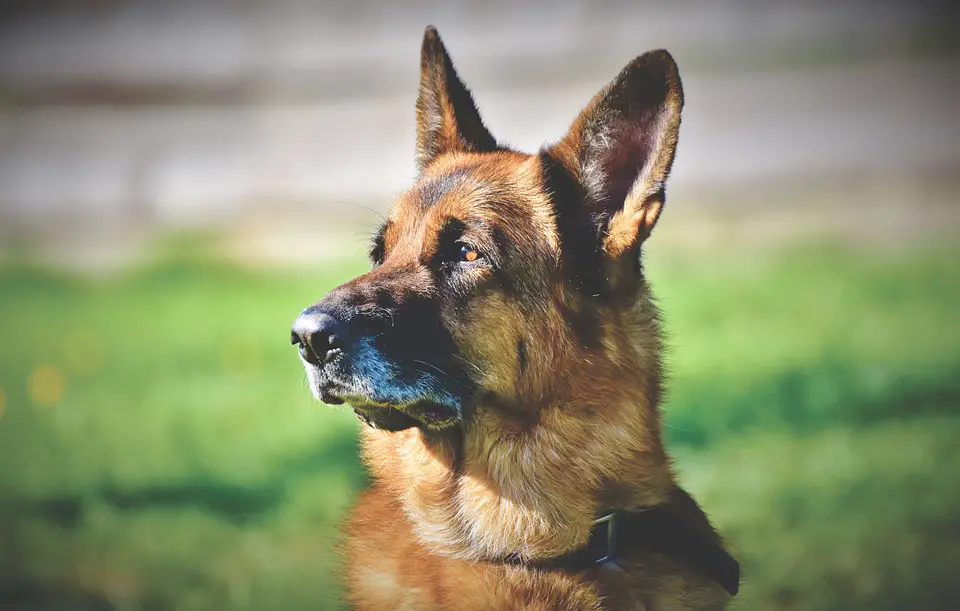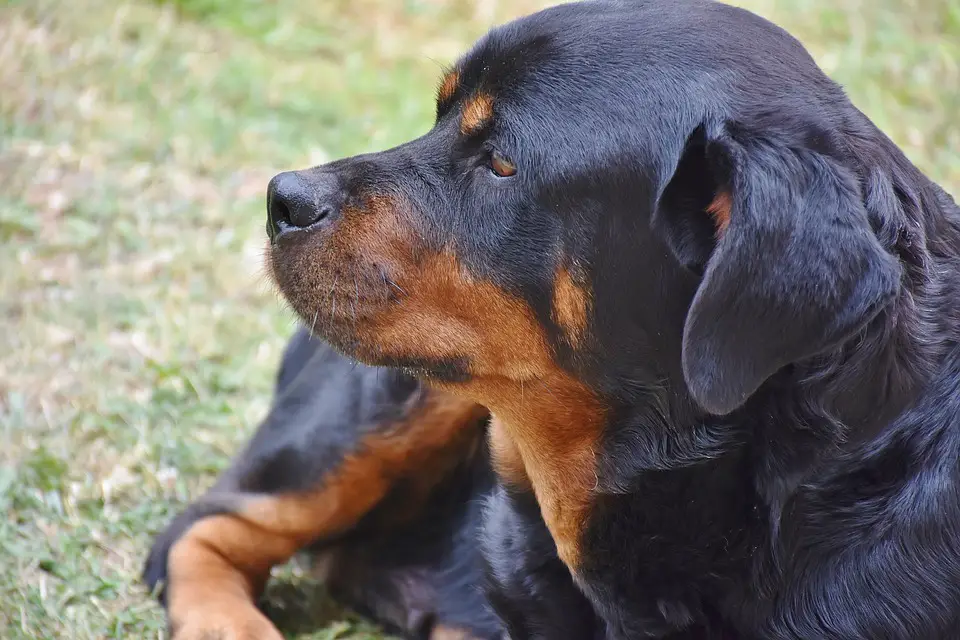Table of Contents
If you deal with anxiety , or if you know that you are constantly going to be spending time outdoors at night time, or even if you simply want an extra layer of protection for you and your family, then a dog might be a good choice. There are many different breeds of dogs out in the world today that can be used as protection dogs or guard dogs. You’ve heard of German shepherds, Dobermans, rottweilers, and similar large dogs that are often used as police dogs or military and service animals. However, not everybody has the opportunity to own a so-called guard dog breed, and as a result it may just be better for some people to do some protection dog training for their pooch instead.
If you were wondering about protection dog training, then you have come to the right place. Today, we are here to talk about protection dog training, and what you need to do to get your dog to become your natural ally and protector. There are many different guidelines to training a personal protection dog, which we will be outlining here today as well. we hope that this guide will be able to help you decide on whether you want to train your own protection dog and if it’s worth it to have one, or if it’s better to simply have a family pet instead.
Downsides to having a personal protection dog

Unfortunately, there are some negatives to owning a dog that has gone through protection dog training. For example, for a dog to be considered a personal protection animal, they must only be friends with one person – their personal handler. As a result, personal protection dogs are usually not considered as family pets. They need to have only one handler who will be responsible for everything related to their care. For example, an attack dog can only be fed by one handler, can only be walked by one handler, and can never be given affection by anyone else.
This does sound rather isolating, doesn’t it? The fact is, unless you actually want a dog that answers only to you, then chances are you would rather get a dog that the whole family can enjoy. However, if you are happy with a dog that only responds to you and will only be loyal to you in particular, then an attack dog might just be something that you need. Remember that a personal protection dog that has gone through protection dog training is a dog that is not going to be a family pet – it is a dog with a job. Keeping that in mind, we can now proceed to talk about protection dog training and how you can do it.
Steps for personal protection dog training
There are many different things that you need to keep in mind when you do personal protection dog training. You need to remember that you must be stern and firm without being cruel or abusive. Must also keep in mind that you have to find the right way in which your dog will respond to rewards, so you need to find their motivation. For example, does your dog respond well to food rewards such as treats? Or do they prefer play time instead? Some dogs even prefer love and affection from their owners as a reward. Finding the right reward that motivates your pet will be crucial and helping you to train them properly no matter what you need to teach them.
So now that we have talked about your pet’s motivations, it’s time to talk about the steps in protection dog training then how you can get started.
In order to have a proper protection dog, you need to teach your dog to be obedient to you and follow your commands. Without doing this, chances are you will have a dog that is stubborn, difficult to train, and hard willed. And so, you must then teach your dog the most basic commands for obedience. Commands such as sit, stay, lie down, and come should always be followed every time you give them. Thus, the goal is to get your dog to follow these commands 100% every time. Once you do get your dog to follow these commands every time you give them, you should also teach them to heel to you even without a leash.
Here is an important reminder: if your dog does not follow these commands every single time – 100% each time, then you cannot turn your dog into an attack dog. Yes, some dogs can in fact fail obedience school and attack dog school. This is basically why not all dogs that go through k9 training graduates the program. The same follows if your dog cannot learn any new commands – they’re just not meant to be a personal protection dog.
Step 2: Socializing your dog
Another thing that you need to do when it comes to protection dog training is making sure that you socialize your dog properly. You might think that it’s not necessarily important to socialize your dog if you want them to be an attack dog, but that cannot be further from the truth. The fact is, protection dogs need to be socialized so that they are aware of many different types of situations so that they do not fear them in the future. It’s difficult to have an attack dog that is on edge because they’re nervous about the unusual and new situation that they find themselves in.
Socialization is not difficult!
Fortunately, socialization isn’t exactly a difficult or impossible thing to do. In fact, you can do it by simply taking your dog for a walk – which you should be in the 1st place, to give them daily exercise. If there is something that makes your dog nervous or anxious that shouldn’t be making them feel this way, perhaps it is a good idea to take your dog closer so that they can investigate by sniffing, pawing, and even mouthing at it. However, do not let your pet with anything in your mouth if you are not sure whether it is safe for them. Offer treats in cases where you feel like introducing them to something that they should know and recognize needs a reward.
Furthermore, you must also teach your dog to look at a normal person or pedestrian and not feel threatened. You need to be sure that your dog will not suddenly attack passersby or people who you know are not a threat at all. Remember that not all dogs can tell whether somebody is safe or dangerous, which is why not all dogs are meant to be attack dogs.
Step 3: Teaching Your Pup to Bark When You Say So

The next thing that you have to do for protection dog training is teaching your doggo to bark when you want them to. There are many guides out there for teaching this to your dog and it usually comes with teaching them the command “quiet” first. Then you will have to teach them to bark whenever a stranger approaches you. This, coupled with the quiet command, will help you to use your dog as a threat to people who may have bad intentions around you. Sometimes, a dog barks is enough to deter somebody from trying anything for fear of the dog actually attacking them.
Generally, it is possible to teach a dog to bark on command. For dogs who have trouble learning this ability, you may have to observe their natural behaviors to find a trigger word that will make them bark. For example, a dog that normally barks at birds might respond to the command bird or some specific species of bird.
Again, you cannot teach your dog to bark when you say so, and if your dog does not bark at strange people , then it is probably not a good choice to continue with training because this dog will not make a good personal protection animal.
Step 4: Teaching your dog to take a protective and defensive stance
Of course, protection dog training would not be effective if you are not able to teach your dog to properly defend you. To do the training for this step, you need to get somebody to help you. This person cannot be somebody that the dog knows, so it must be somebody who they have never met before. You can then ask this person to walk up to you during your dog’s daily walk and challenge your pup. For protection, it is good to give your helper a suit to protect against dog attack. If you do not have one of these, then you can give them something like an oven mitt to place on their arm. If they feel as though they want more protection, then they can rap a quilt or a thick blanket around their arm. This is only for protection.
Chances are, you might not even need the protective suit but it’s better to be safe than sorry. Your friend must approach you and your dog while you are walking and then you must order your dog to bark. When your dog barks, make sure to tell your friend to act scared and run away. This will teach your dog to become more confident and their productive skills. Of course, you need to be prepared by making sure that your dog is on a leash during this exercise. Also be ready for your dog to suddenly run after your friend because some dogs have a natural prey drive that can get triggered by seeing somebody run away from them.
A note:
In most cases, this is actually a rather good place to end you are protection dog training. Fact is, most people will be scared off by a big burly dog barking at them and threatening to chase after them. If you decide that you want to take this a step further and teach your dog to actually attack people, remember that a dog trained to do this is not a pet that you would want around your house. This is because protection dog trained to attack people might do so of their own volition if they perceive a threat – even if there is none to be found. there are many stories of protection dogs attacking family members or even children, something that you certainly don’t want to happen.
Step 5: Teach Your Dog When to Back Off
The next and one of the most important steps in protection dog training is teaching your dog how to back off. Your attack dog needs to be able to stop threatening or attacking when ordered to – the animal must be willing must be willing to back off and leave the subject alone. Therefore, the next part of your training is to teach the dog the leave it command. This is critical to making sure that you do not end up hurting anybody. Therefore, if the dog doesn’t follow when you tell them to leave it, then they have ultimately failed their training. You must be able to stop your dog in order for you to prevent unnecessary injury that can cause you a lot of legal and financial problems in the long run. You also do not want somebody’s death on your conscience.
Other notes that you should not forget

Remember that personal protection dogs are not pets. Therefore, you should act accordingly and make sure that you train your dog properly and handle them well so that you do not end up with a liability. The fact is, most personal attack dogs are immediately liabilities, but if you do not keep a close eye on them more problems can occur.
Another note is that some people who train dogs for a living do not suggest training naturally protective dogs to become an attack dog. For example, there is no need to train pit bulls, mastiffs, bullmastiffs, rottweilers, Doberman pinschers, and other similar dogs to become attack dogs because they are naturally very protective by simple nature. Of course, do choose the breed that you give personal protection dog training to – there isn’t any point in training a dog like the poodle or the Chihuahua for example.
Finally, you should know that you can give a dog the training necessary to make them an attack dog without having to shell out thousands of dollars for a ready-trained animal. However, you should remember that dogs trained to be protection animals will have their personalities change accordingly. Thus, you should be prepared to adapt.
Conclusion
When it comes to protection dog training, the fact is you don’t need to hire a trainer for your animal. It’s not necessary to shell out the thousands and thousands of dollars for their training either. With patience and perseverance, you can train your animal yourself – but remember that not all dogs are made to be attack dogs. As a result, you may end up with an animal that has failed its training. But just because an animal has failed to become an attack dog does not mean that they are worthless or that they are useless. An animal like this can still be full of love and loyalty for you and your family and so you should love them and treat them just as well.
